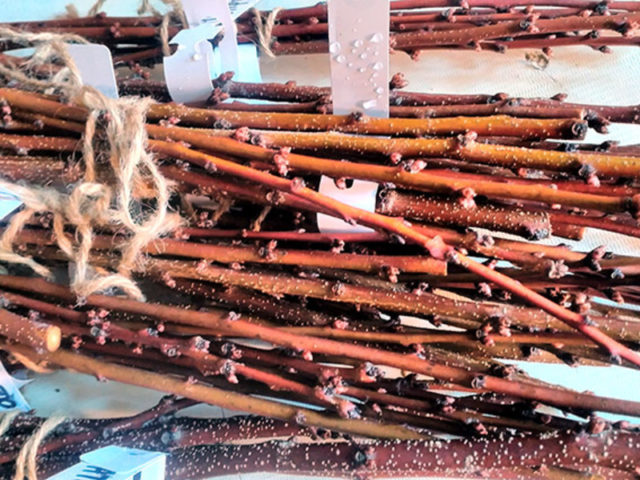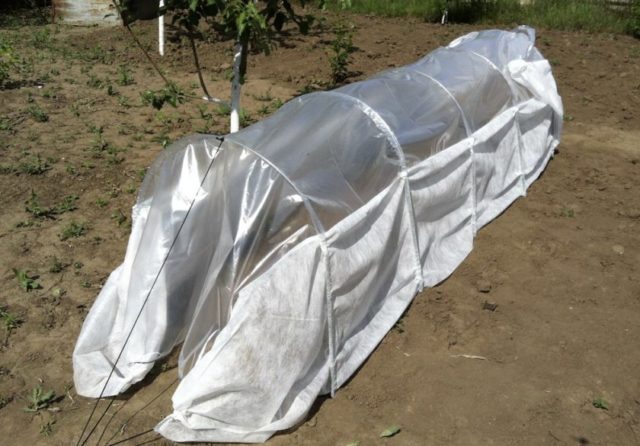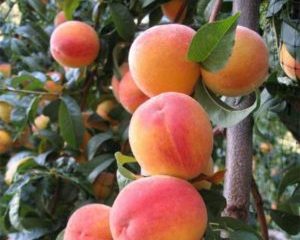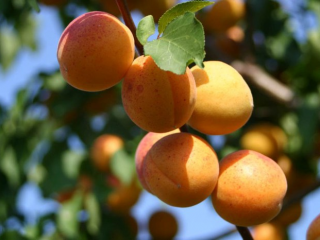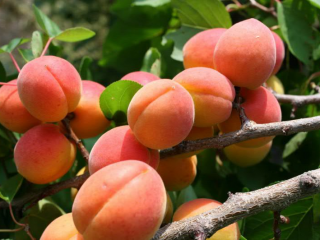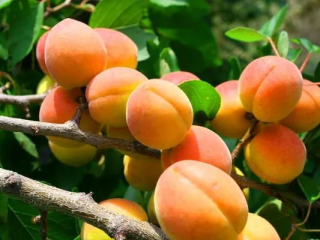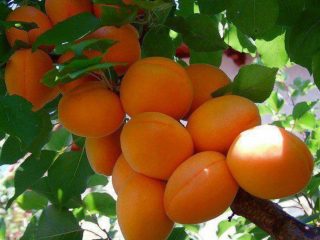Content
Apricot propagation is one of the main tasks of gardeners who want to grow their favorite variety on their site. There are several ways to obtain young fruit tree seedlings.
Apricot propagation methods
The tree can reproduce both by seeds and by one of the vegetative methods. If you use the method incorrectly, there is a high risk of getting a crop whose characteristics will differ significantly from the parent ones.
Is it possible to propagate apricots from green cuttings?
It is possible to grow apricots using green cuttings. It should be borne in mind that the result is influenced not only by the quality of the harvested material, but also by compliance with the principles of reproduction by this method.
Propagation by lignified cuttings
Apricots can be propagated safely from lignified cuttings.At home, shoots are harvested at any time, but the most successful specimens of seedlings are obtained if all work is carried out from autumn until spring bud break.
The length of the shoots for propagation should be 25-30 cm and the thickness 6-8 mm. The top cut should be straight, made directly above the kidney. The lower one is beveled.
After preparing the branches, they can be immediately planted in the ground, but there is a high risk of their death from winter frosts. The best option is to root at home. Until spring, woody shoots should be stored on the bottom shelf of the refrigerator, having previously wrapped them in plastic, or in the basement.
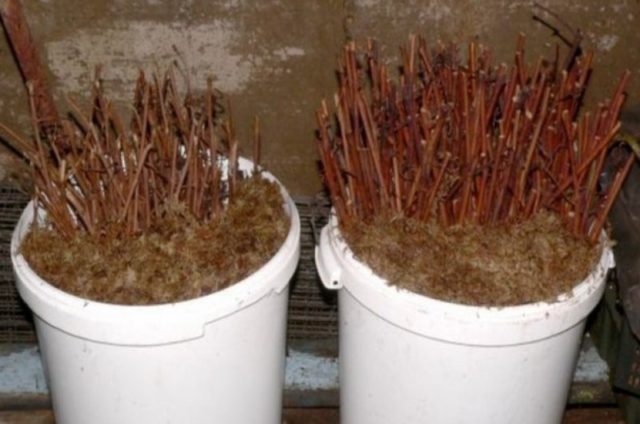
If you decide to transfer the cuttings to a cool room, then it is important to first stick them into wet sand

A cutting is a cut branch divided into segments with 6 buds
To propagate apricots, boxes should be prepared in the spring. They must be filled with soil: peat and sand mixed in equal conditions. There should be enough soil in the container so that the cutting, placed in the container at an angle of 45 °, is almost completely submerged. 2-3 buds should remain above the surface of the earth.
To propagate an apricot by rooting a lignified cutting, it is necessary to deepen the planted shoot to the second bud. As soon as the root system is formed, the seedling can be transferred to open ground.
Growing from seed
Even after watching the video and studying the detailed instructions, not everyone prefers propagating apricots by cuttings. The easiest way is to plant a seed.
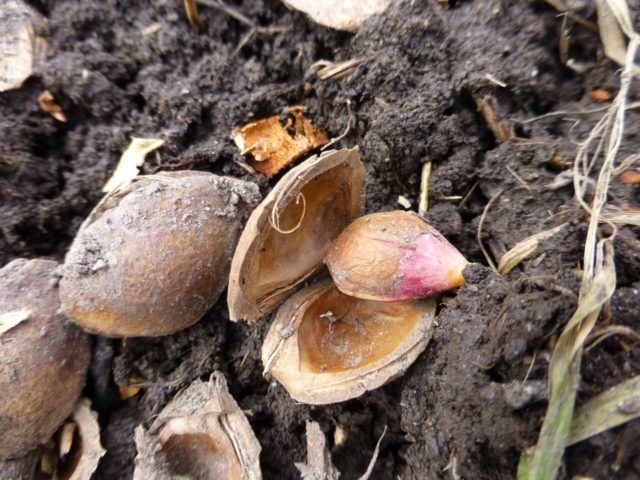
It is best to plant seeds of local varieties, or those growing in the same region where the gardener’s plot is located
To propagate apricot using this method, the seeds are prepared, stratified and then planted in the ground.
Graft
This method of propagating apricots is preferred by gardeners who like to experiment with crossing varieties. The rootstock can be not only apricot, but also almond, plum or peach. There is no reliable guarantee of a positive result.
Cuttings are carried out in the fall, choosing strong annual specimens. On the top of the shoot, the cut should be oblique. The sprouts should be stored in a bucket of cool water or a refrigerator.
The grafting is carried out in May, when the buds begin to swell. The shoot is attached to the scion, on which an oblique cut was previously made. When connected, the shoots must coincide with each other.

The seam should be coated with garden varnish, and then the shoot should be wrapped with rope or tape
The average survival time for such apricot cuttings after grafting is a month. The culture propagation procedure was successful if new leaf blades appeared on the branch.
Root shoots
The propagation method is rarely used: shoots grown from seeds are needed. This phenomenon can be observed if the roots of the tree are damaged by rodents, or the above-ground part of the apricot has died.
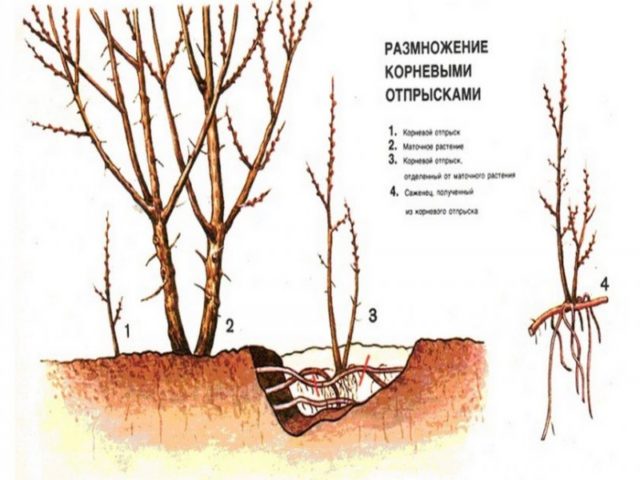
If there is a shoot, then the soil around it needs to be excavated down to the root system, the shoot must be cut off along with part of the roots and transplanted into the prepared hole.
Apricot propagation by air layering
The propagation method is rarely used: in the summer you will have to select a one-year-old shoot and make two circular cuts on it to remove the bark. The cleaned surface of the shoot must be treated with a root formation stimulator and wrapped in film, leaving a little space for soil.
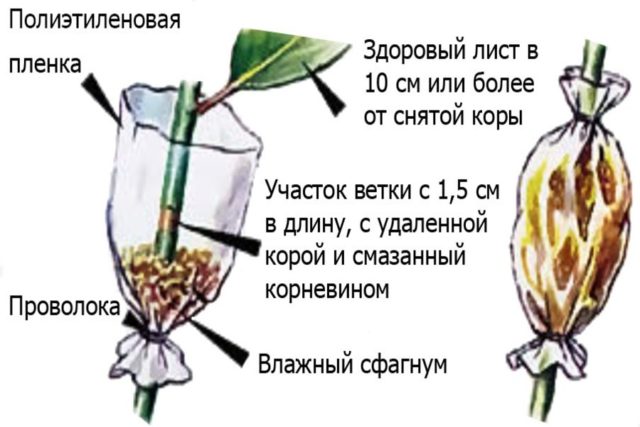
The seedling is separated from the mother branch after the cuttings have matured, and then transplanted into open ground.
How to propagate apricot from cuttings
Cuttings are the most common method of propagating apricots. There are several methods. The choice of method is carried out taking into account personal preference and capabilities.
Propagation of apricot by cuttings using the Burrito method
If apricot cuttings are carried out in the spring, then mature shoots that are fully ripened should be selected.
Before the procedure, you need to prepare equipment: scissors, newspapers, root stimulator, fungicide solution, plastic bags.
Step-by-step instruction:
- Cut branches, each up to 20 cm long, up to 5 mm thick. Each shoot must have at least 3 buds. The branches must be healthy, without visible damage.
- Remove petioles and leaf blades from the shoots, treat the workpieces with a root formation stimulator according to the instructions, and then with a solution of fungicide or potassium permanganate.
- Wrap 4-7 shoots in newspaper moistened with water, then roll it into a tube. Place the workpiece in a plastic bag.
- Transfer the packages to a cool place where the temperature is between + 14-18 °C.
Callus should appear in 2-4 weeks. It looks like sagging on the surface of the shoot.

It is from the callus that the root system will subsequently form
As soon as the roots appear, the apricot seedlings should be transferred to pots. The universal soil is poured into a container, a young tree is placed there and covered with earth. The top of the seedling needs to be wrapped in film. Care consists of watering, airing
To propagate apricots, you need to plant rooted seedlings in open ground. The optimal time for the procedure is spring.
Landing algorithm:
- the place should be sunny, windless;
- Before planting, the stems of the plant are cut off, leaving 3-4 buds;
- Organic fertilizers are added to the dug hole, a seedling is placed, sprinkled with soil, and watered;
- mulch the soil in the hole with sawdust.
How to propagate apricot from green cuttings
Initially, you should prepare a place on the site. Dig a hole 50 cm deep and 90 cm wide. Pour broken brick or crushed stone onto its bottom. The thickness of the layer should be at least 15 cm. Distribute river sand 4 cm thick over the brick. Fill the next 25 cm with wood dust mixed in equal proportions with sand and manure. Add a bucket of ash to the resulting mixture. The topmost layer is sand.
Stages of apricot propagation by green cuttings:
- Shoots related to the current year's growth must be cut. The optimal time for the procedure is June. You need to harvest branches in the evening or on a day with cloudy weather.
- Place the cut shoots in a solution of the stimulant Kornevin or Heteroauxin, immersing the cuttings by 1/3 of the total length. The duration of the procedure is 16 hours.The container with the shoots immersed in the solution should be in a darkened room with a temperature of at least + 24 °C.
- After the time has passed, rinse the cuttings and plant them in the prepared hole. The lower cut of the shoot should be in a layer of sand and not touch the soil mixture.
- Build a greenhouse: install arcs and stretch the film cover. You can remove it after the cuttings have rooted.
Subsequent care of the young seedling consists of watering and fertilizing. Manure infusion can be used as a fertilizer (1 part manure to 6 parts water).
In winter, green shoots should be covered with sawdust and other available materials. Young apricots can be transferred to a permanent place only after a year.
Recommendations
Shoots selected for propagation must be intact, with healthy bark, and without signs of disease. All instruments should be treated with a disinfectant solution before use. The room where the workpieces are stored must be at an optimal temperature. The appearance of rot, blackening of shoots, absence of roots or damage to them are reasons for removing planting material.
Regardless of the chosen apricot propagation method, the tree needs care.
Basic principles:
- crown formation (annual pruning of side branches);
- feeding (apply organic preparations under the roots before and after flowering, feed with potassium and phosphorus before wintering);
- watering at least 4 times a year: in the spring, during the formation of the bud, during the ripening of the fruits, before the tree goes into hibernation.
Depending on the varietal characteristics, the tree should be treated preventively against diseases and pests.
Conclusion
Apricot propagation is a labor-intensive process that takes time.The choice of method depends on personal preference. Before you start propagating apricots, you should take into account its varietal characteristics.
